Then students use those colors to shade in their key Choropleth maps are used for indicating differences in land use, like the amount of recreational land or type of forest cover and Population density information (expressed as 'per km²) Example of a Chloropleth map Choropleth Map Data Classification. Using Vue2Leaflet. The choropleth method has been deprecated. These boundaries are color coded based on the population metric. You can create an Admin Level 1 map of an individual country by passing its name to the function. To create a map with shaded regions, we need: A geoJSON file with the regions. D3 is a great library for manipulating SVG elements and make them data-driven. Choropleth maps need an additional data type in order to correctly shade geographical boundaries: Topojson. This article is a step by step tutorial on how to create custom views in Omniscope. 
Choropleth map A choropleth map that visualizes the fraction of Australians that identified as Anglican at the 2011 census A choropleth map (from Greek χῶρος "area/region" and πλῆθος "multitude") is a thematic map in which areas are shaded or patterned in proportion to the measurement of the statistical variable being displayed on the map, such as population density or per-capita Example choropleth map with Dash. Choropleth Mapping. You can also use a search to generate locations from signed degree latitude and longitude coordinates in each event. Dr. The darker the region, the higher the percentage of excessive Creating a Basic Choropleth Map in ArcMap. Wikipedia: Choropleth Map Data Classification. Reference or navigational maps are created to help you navigate over the earth surface. It should be relatively straight forward to insert your own data set into one of the script examples. 
Hadley Wickham has provided just such a minimal example for Choropleth mapping on pages 10-11 in the Changes and Additions guide. To demonstrate them, we'll show how to make a simple choropleth map, using US Census data available here. To make a choropleth map, the cartographer gathers data for an area. A thematic map in which the distribution of some property is shown using different colours Choropleth Map Data Classification. Example: GPX trail as color-coded lines A choropleth map displays numerical data using a color gradient. Import low-resolution U. This is my attempt to create a single page version of the entire This example shows how to create a choropleth map of states in the US using data from the National Science Foundation about venture capital spent in the US in 2012. This is a very important part of GIS, and this article will help you gain better insight into the process. 
This example produces three choropleth (two-dimensional) maps, each showing the population of a southeastern state in America. A choropleth is a thematic map where areas are colored according to some characteristic of those areas. You’ll be able to switch between layered data from different years. Visualizes population density of the world as a choropleth map. For a complete example using script tags check this codepen This is the third article of the Maps in R series. Users How to create a choropleth map. In addition to viewing all ZIPs in the country you can select ZIPs by State, County, Metropolitan Statistical Area (MSA) as well as manually specify a number of ZIPs. Choropleth maps are thematic maps in which areas are shaded based on the prevalence of a particular variable. 
A looking glass into a satellite map layer. You save a map as an html file by using map. In addition, you will learn about Folium, which is another visualization library, designed especially for visualizing geospatial data. A choropleth map displays divided geographical areas or regions that are coloured in relation to a numeric variable. The example below Produce the choropleth map. Creating a Choropleth Map of the World in Python using Basemap. Location names might already be included in events. But instead of mapping the data so that the region appears uniform, ancillary information is used to model internal distribution of the phenomenon. 
Example: Image Overlay. Example: Circular snapshots. They examine the map given and convert it into a choropleth map through coloring. Introduction. Census as an important source of numerical data that is depicted on choropleth thematic maps as well as on other thematic map types. This map Adding a Data Layer ~ Creating Choropleth & Dot Density Maps with Boundaries. For example, population data. The data in a choropleth map can be categorical or numeric.
A choropleth map is a map that uses fixed boundaries an d a consistent symbology to illustrate facts about the places mapped. In our book, we show a simple example of a map (section 6. Choropleth Maps in R How to make a choropleth map in R. Creating a Choropleth Map of the World in Python using GeoPandas. Thematic Mapping API The choropleth map is a chart presenting phenomena on the map and is one of quantitative methods in cartography. In this post, we'll take a look at several different types of choropleth maps and which type might be better for certain measurements. These kinds of maps show you where particular places are located and can be used to navigate your way to them. An example of this is in this critique of a map in the Bad maps thread on the GIS stackexchange site. 
An example of a choropleth commonly seen in the media is a red/blue state map that shows the dominant political parties in the different US states. Lookups, Features, Polygons… Oh my! Choropleth comes from the Greek choros (area) and pleth (multitude). Isopleth maps also A dasymetric map is an alternative to a choropleth map. Looking at a choropleth map might, for example, quickly give you a general idea of which parts of the United States are primarily Republicans or Democrats and which countries in the world are rich or poor. It displays world population data downloaded from the World Bank databank. For example, a choropleth map of the 3,000 counties in the United States is likely to be misinterpreted far less frequently than a choropleth map of the 50 states (although there are counties in the West that are as large as states in the East and may still be misread). This example comes directly from the (awesome) documentation of this library. Light colors represent low Population density information, expressed as 'per km²,' is appropriately represented using a choropleth map. 
A Choropleth Map displays divided geographical areas or regions that are coloured, shaded or patterned in relation to a data variable. As with a choropleth map, data are collected by enumeration units. Use a Choropleth to compare aggregate values across regions. . How to use. Here is an example of viewing all ZCTAs in a State by using the state_zoom parameter: Choropleth maps are thematic maps in which areas are shaded based on the prevalence of a particular variable. Comments in the code clearly illustrate the steps taken to create a nice transition based temporal world map. Each data classification method impacts the reader differently. 
Our new business plan for private Q&A offers single sign-on and advanced features. Note that you need 2 elements to build a chloropleth map. : A couple of examples might be a dot map showing corn production in Indiana or a shaded area map of Ohio counties, divided into numerical choropleth classes. Below is a 5-class choropleth map that uses a sequential color scheme (from light to dark) attached to an equal-interval classification scheme. The view that we will be creating is a choropleth map and we will be using a visualisation library called D3. The dataset is worldsales, which is a hypothetical data file that contains sales revenue by continent and product. A choropleth map is a geographical map where spatial areas are colored in hues that represent the quantity of a given attribute in that specific geographic region. Using the Sample - World Bank Indicators data source. 
choropleth. ii/ A data frame that gives the values of each zone. There are different ways of creating choropleth maps in Python. This code example retrieves US state boundaries from a Spatial Data Source that contains US census data. How to design your own map? This example is based on a scenario realized for one of our customers. But both SAS and R have complex functionality for using pre-compiled map data. A choropleth map, of course, requires data. Data Visualization Projects - Visualize Data with a Choropleth Map. 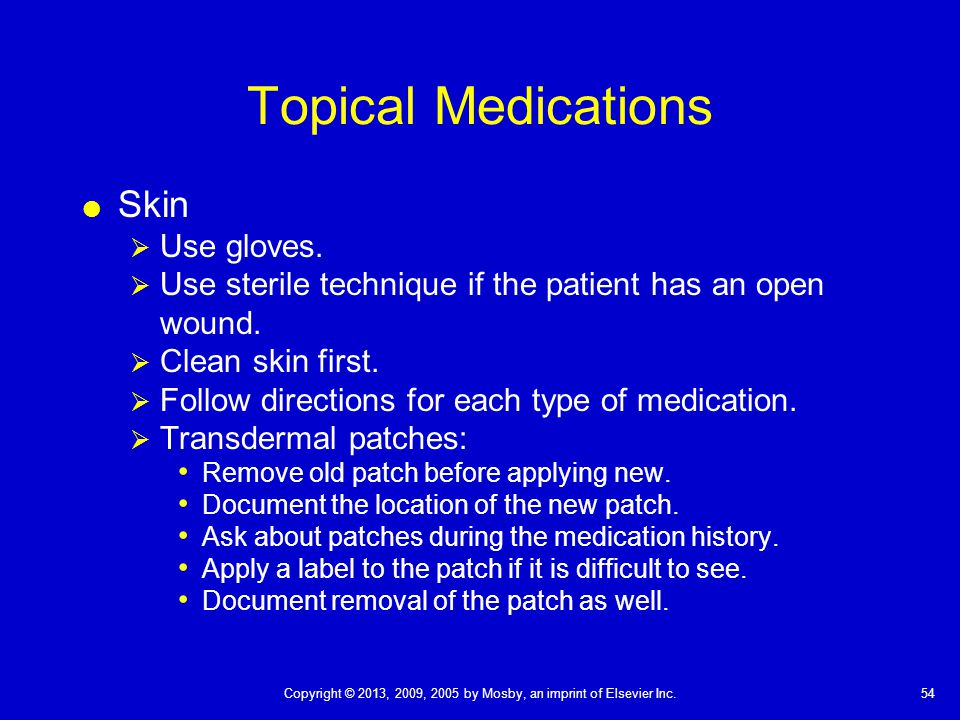
Countries are shaded in proportion to the population density. Example Classed Choropleth Map. Even if you think you don’t know what a choropleth map is, chances are you’ve seen one. Basic Mapping Principles for Visualizing Cancer Data Using Geographic Information Systems (GIS). Create In this geography worksheet, students identify and describe how to apply choropleth mapping skills. As an example, the choroplethrAdmin1 package comes with some demographic data from the Japanese Census Bureau: Impress your Colleagues, Clients, Team Leads or a class presentation with the customised Choropleth map. For our first choropleth map, we'll use the NYC school district boundaries available from Open Data NYC Planning (scroll down to "School, Police, Health & Fire" and export as geoJSON, called schoolDistricts. e. 
A Choropleth Map is also known as a Shaded Map and a Thematic Map. js, pick an example below. Lucky for us, there is also a way to create a choropleth map thanks to Folium. 3. Instead use the new Choropleth class, which has the same arguments. For more help, join our online BGCSE Geograph Visualizes population density of the world as a choropleth map. : The idea of an isopleth map can be compared with that of a choropleth map. Today, I am going to talk about Choropleth Map Data Classification. 
Try Stack Overflow for Business. It loads the country shapes from a GeoJSON file via a data reader, and loads the population density values from another CSV file (provided by the World Bank). GIS Software for Creating Choropleth Maps. S. A choropleth map is a map in which areas (like states or countries) are filled with colors according to your data. Under the Data colors section you can adjust the type of colors used on the map and the thresholds that determine their color. Map forms. This example shows how to create a choropleth world map with d3. 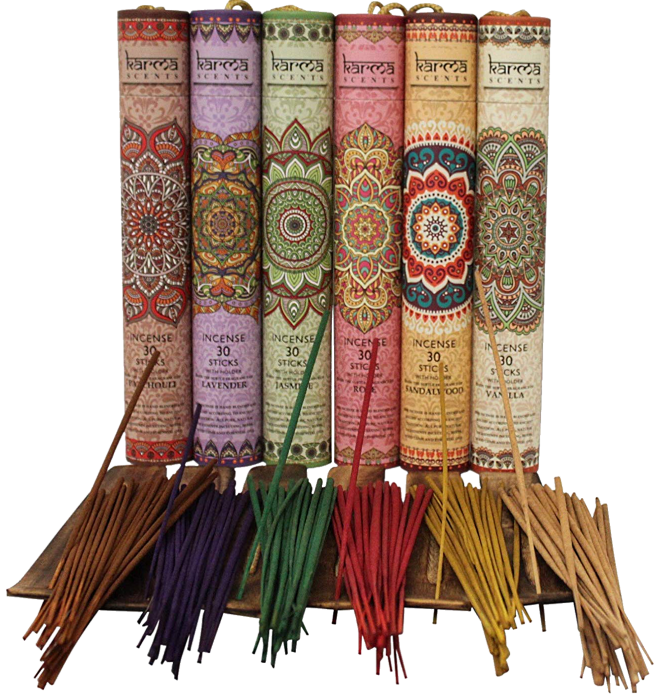
0–10 10–20 20–50 50–100 100–200 200–500 500–1000 1000+ Leaflet | Map data © OpenStreetMap contributors, CC-BY-SA, Imagery © Mapbox, Population data Here is an example of a choropleth map made using the Folium library. Get a free Mapbox account to create your own custom map and use it in this example. Done correctly, basic choropleth maps use color to show quantities within geographic areas - such as states, US counties, or even countries. A frequent critique of choropleth maps is that, in the process of choosing color bins, one can hide substantial variation within each of the bins . A choropleth map is a kind of a thematic map that can be used to display data that varies across geographic regions. Think of them like heat maps that take geographic boundaries into account. The file also Generate a Choropleth map. A choropleth map – also known as a heatmap – allows you to divide a map into geographical areas, and give each area a color that corresponds to a measurement in that area. 
The earliest choropleth map is credited to Charles Dupin, a French mathematician who, in 1826, published a thematic map using shadings to show the distribution of illiteracy in France. They are different from general reference maps because they do not just show natural features like rivers, cities, political subdivisions and highways. We can make choropleth maps using the plotly library. This tutorial walks you through the steps to prepare and import data for a choropleth map in Datawrapper. create_map(path='map. A common example would be a map of the United States with each state colored red or blue according to which political party's candidate that states electors voted for in a presidential election. Examples placed on a single map or table. IPYNB. 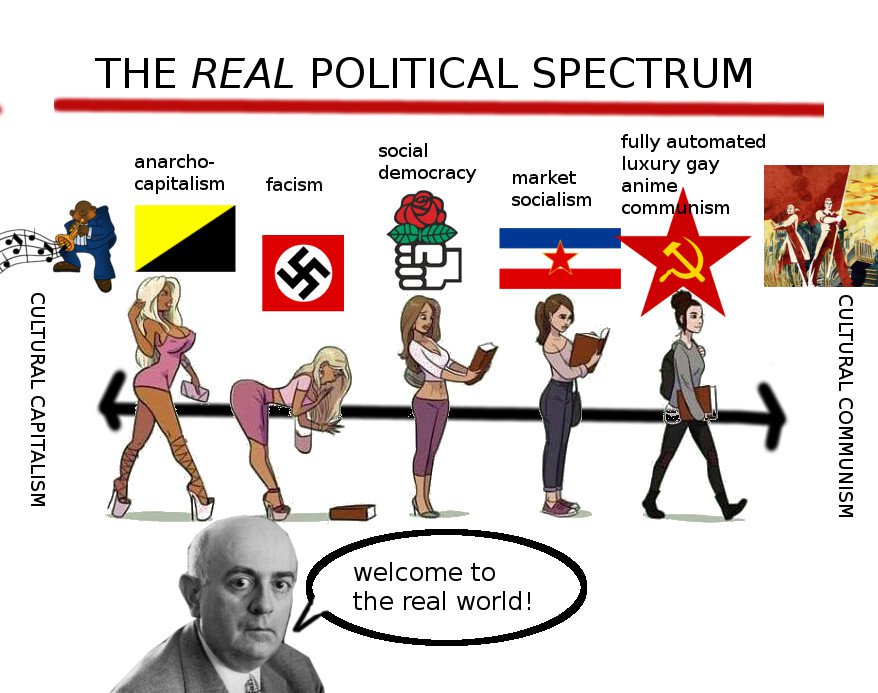
The term choropleth derives from Greek: choro (area) + plethos (multitude). Immerse colors the map regions based on the measure you choose. My map is based on the example for a simple Choropleth map of unemployment rates with thresholds and the example that uses a selection of geographic units. …This is a choropleth map. This is a case study of creating a colorful interactive choropleth map of US States Population Density with the help of GeoJSON and some custom controls (that will hopefully convince all the remaining major news and government websites that do not use Leaflet yet to start doing so). I'm going to show you how to create…a choropleth map and a point map. They are a great way of showing how a measurement varies across a geographic area. Map The geo choropleth chart is designed as an easy way to create a crossfilter driven choropleth map from GeoJson data. 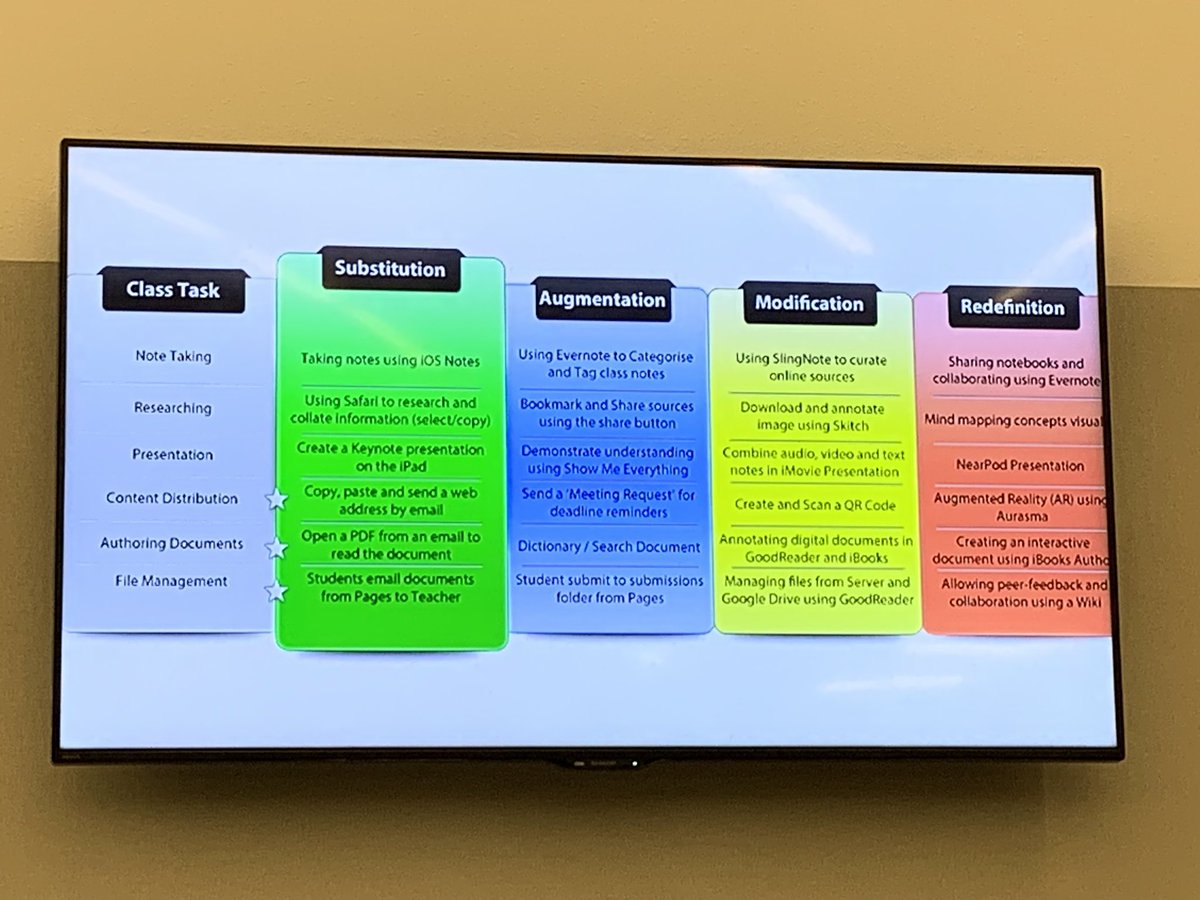
We will now create a map visualization. vue-choropleth. small filesize) boundaries for a given set of geographies. Well, that was fun! But this might not be an ideal visualization to compare maps with each other. SAS/GRAPH Mapping Statements and System Options SAS/GRAPH Mapping Procedures GEOCODE Procedure SAS/GRAPH Mapping Statements and System Options SAS/GRAPH Mapping Procedures GEOCODE Procedure Choropleth. Shows world population density as choropleth map. GitHub Gist: instantly share code, notes, and snippets. Then, in the subsequent example, we will create a variation of this visualization. ![]()
For example, Figure 1 For example, if our data is a count like a number of cats, this data type is not suitable for the choropleth, but a number of cats per square mile is a statistical ratio which always has a value and, thus, is appropriate for choropleth maps. 2) where we read the boundary files as data sets and use SAS and R to plot them. Example: Choropleth Map. Set the Dimension to state_name and the Color measure to average Employment. A choropleth map (from Greek χῶρος "area/region" and πλῆθος "multitude") is a thematic map in which areas are shaded or patterned in proportion to the measurement of the statistical variable being displayed on the map, such as population density or per-capita income. Example: GPX trail as color-coded lines Choropleth maps are best used to display the geographic distribution of data. Geographic visualizations aggregate events by location. To build our Google Maps heatmap, we will be using: Google Maps API for generating a map and visualizing colored areas. 
Add a Graphboard node and open it for editing. Ari Lamstein did a 5-week email course on how to map census data in R. In dual axis maps, each of the two axis' marks can be set separately. In a choropleth map, color can be used to represent distinct attributes or, as in the example below, to represent weight of a value (a strong or weak party vote-share shown as light or dark colors). Example: Map overlay. How are Choropleth Maps Organized? Choropleth maps are based on predefined political borders such as states or counties. Under the Format paintbrush there are several sections available to modify the appearance. …A choropleth map is a geographical map where spatial areas…are colored in hues that represent the quantity…of a given attribute in that specific geographic region. 
geomap. Choropleth maps can Examples of Datawrapper choropleth maps. You can also host your maps on a server, which is however, not for free. Not only do they resolve coordinates into named feature IDs, they also provide the polygons to be drawn on the map. In this short video, we look at how to read a choropleth map. Data values are usually mapped to different color saturations for numerical variables or color hues for categorical variables. Choropleth migration maps which show relative densities of a species across the earth's surface. The popups hold additional information on Dortmunds districts. 
Epi Map can create a choropleth or dot density map by combining a dataset with three boundary formats: shapefile, map server, or KML (Keyhole Markup Language) (descriptions of each format follow). This tutorial shows you how to display data from multiple sources on a Google map. html') instead of display(map) Choropleth map. Step 1: Create Our Region Map A thematic map in which administrative areas are colored or shaded according to the range in which the aggregated statistic of interest falls. This Drilldown Choropleth map shows military veterans by county in the United States. The name of this technique is derived from the Greek words choros - space, and pleth - value In this geography worksheet, students identify and describe how to apply choropleth mapping skills. Maptitude Mapping Software gives you all of the tools, maps, and data you need to analyze and understand how geography affects you and your business. We're using the island of Trinidad as an example. 
This map is a complex variation of the choropleth map and works by using statistics and extra information to combine areas with similar values instead of using the administrative boundaries common in a simple choropleth map. This map has been reduced to about 80% of its original size for this discussion. Choropleth maps with regular patterns structure are also called Choropleth maps according to the geometric method (Imhof 1972, p. In this article. Visualize population density on a map. Choropleth maps are one example and are handy to compare features across regions. Check out the code for this example on github. Using the plotly package you can create interactive plots, which can contain additional information when hovering above an object. 
The data is available at the University of Kentucky website. i/ A shape file in the geojson format: it gives the boundaries of every zone that you want to represent. This is followed by a brief discussion of the U. American Journal of Choropleth maps are used for indicating differences in land use, like the amount of recreational land or type of forest cover and Population density information (expressed as 'per km²) Example of a Chloropleth map Looking at a choropleth map might, for example, quickly give you a general idea of which parts of the United States are primarily Republicans or Democrats and which countries in the world are rich or poor. Examples: US Venture Capital Landscape 2011 Custom Cluster Map Visualization: Why is the Clustered Mapping not specific enough and the Choropleth map wont work for me? Custom Cluster Map Visualization splunk-enterprise mapping choropleth geo featured · edited May 27, '18 by ssadh [Splunk] 45 A bivariate choropleth map is “a variation of the simple choropleth map that enables us to portray two separate phenomena simultaneously”2 1Brewer, CA. Often the case, the map maker uses a type of data classification to produce its own unique choropleth map. Integrating with model changes using UI5 Table. Objective: If you use a frontend framework (like Vue for example), the test results may be Thematic map(s) in which areas are shaded or patterned in proportion to the measurement of the statistical variable being displayed on the map, such as population density or per-capita income. .gif)
A dasymetric map is an alternative to a choropleth map. Thematic Maps The map can be found on our online store with Excel maps and delivered to you in 24 hours. . We have a separate, equally short tutorial on how to create a symbol map. Choropleth maps use colors or patterns to represent attributes associated with certain geographic regions. Next, the Choropleth map A choropleth map that visualizes the fraction of Australians that identified as Anglican at the 2011 census A choropleth map (from Greek χῶρος "area/region" and πλῆθος "multitude") is a thematic map in which areas are shaded or patterned in proportion to the measurement of the statistical variable being displayed on the map, such as population density or per-capita A typical choropleth (or filled symbol) map in Tableau only shows one value for every polygon. Dash is an Open Source Python library which can help you convert plotly figures into a reactive, web-based application. This kind of map can quickly display how a particular factor—such as population density or per-capita income—varies across regions or countries. 
…There are some specific requirements…for generating choropleth maps in Choropleth Example¶ Create a new Choropleth. There are excellent examples of choropleth maps and their associated R code, including my favorite (i. After having shown how to draw a map without placing data on it and how to plot point data on a map, in this installment the creation of a choropleth map will be presented. If you're looking for a simple way to implement it in d3. Example datasets appropriate for choropleths: world map of income tax rates in each country; This page shows how to make a choropleth map with ggplot2 from geoJSON data. An example from the Czech Republic is shown below. Vue components to display a choropleth map given a certain GeoJSON and another datasource to show information from. 4. 
Here we’ll try to find guidelines to all of these questions, for a specific subset of maps: Choropleth maps (the ones in which each region is filled with a color that represents a value). Getting the map to show was the first part but now let’s integrate the map with UI5 model changes. You can set various properties of the map when instantiating a map object. Choropleth maps are useful for displaying statistical data spatially. Minimal Choropleth Example Epi Info™ User Guide Maps Adding a Data Layer Creating Choropleth and Dot Density Maps with Boundaries. We got a factory layout and were asked to design an Excel map for reporting purposes. A bivariate choropleth map instead has color encoding for every polygon that represents two different, but related values. Now, what if one of your views shall be a Choropleth Map? How can you show only the selected part of a map on your dashboard? Today’s post describes three different options how to do this. 
Choropleth map; Contents Introduction Documentation Visualization API Examples Choropleth map Prism map Proportional symbol Pie chart map Forum. A choropleth map shades geographic regions by value. Here’s an example of the map. Topojson files are a JSON-type file that include web-optimized (ie. Furthermore what’s interesting is that creating choropleth map in excel doesn’t require you to be a cartography expert, it is as simple as ‘drag and drop’ and in just 3 minutes. Not only are choropleth maps easy to read, but they can be easy to create using Google spreadsheets. Bivariate choropleth maps combine two datasets (usually numerical data) into a single map allowing us to show relatively how much of X (variable 1) and Y (variable 2) exist in each enumeration unit. Contribute to steve98654/Dash-Choropleth-Example development by creating an account on GitHub.
Positions and displays an image over an interactive map. The example below Before we make a bivariate choropleth map, let’s quickly cover the concept of univariate choropleth maps. Choropleth Mapping Strategies Choropleth maps reveal patterns in data by showing relationships based on the spatial distribution of data. Minimal Choropleth Example Mike Bostock's multiple examples pages provide tutorials for generating and manipulating all kinds of maps. Open a new worksheet. Objective: If you use a frontend framework (like Vue for example), the test results may be This is only true for *unclassed* choropleth maps (which in general, are a data viz no-no…for exactly the reason you state). To make a choropleth map you need two inputs: A geospatial object that provides the boundaries of the geographic units that interest you. For a complete example using a single-file component, check the code in the example. 
For example, a choropleth map is extremely useful when looking at vote totals by political party per county in the United States, as below. provinces, municipalities/communes or districts, and the magnitude of the phenomenon is presented in classes (ranges). A thematic map is a map that emphasizes a particular theme or a special topic such as the average distribution of rainfall in an area. The choropleth mapping technique, which uses "ranges" or "graduated color," is a type of thematic mapping that focuses usually on a single theme with data summarized by statistical or administrative areas. Taking an example, let’s say we were to compare population density in different states of the United States of America in a colorful manner, choropleth maps would be our best bet • A choropleth map is a map in which the feature polygons are colored according to their attribute values. R Code for this map available from This is the Green Room The choropleth map is based on predefined areal units, such as states, counties, census tracts, etc. This example shows how to create a choropleth map of population density for the six New England states in the year 2000. How to create a choropleth map with GeoJSON and Google Maps Choropleth maps are straight up awesome at displaying statistical information for a given area. 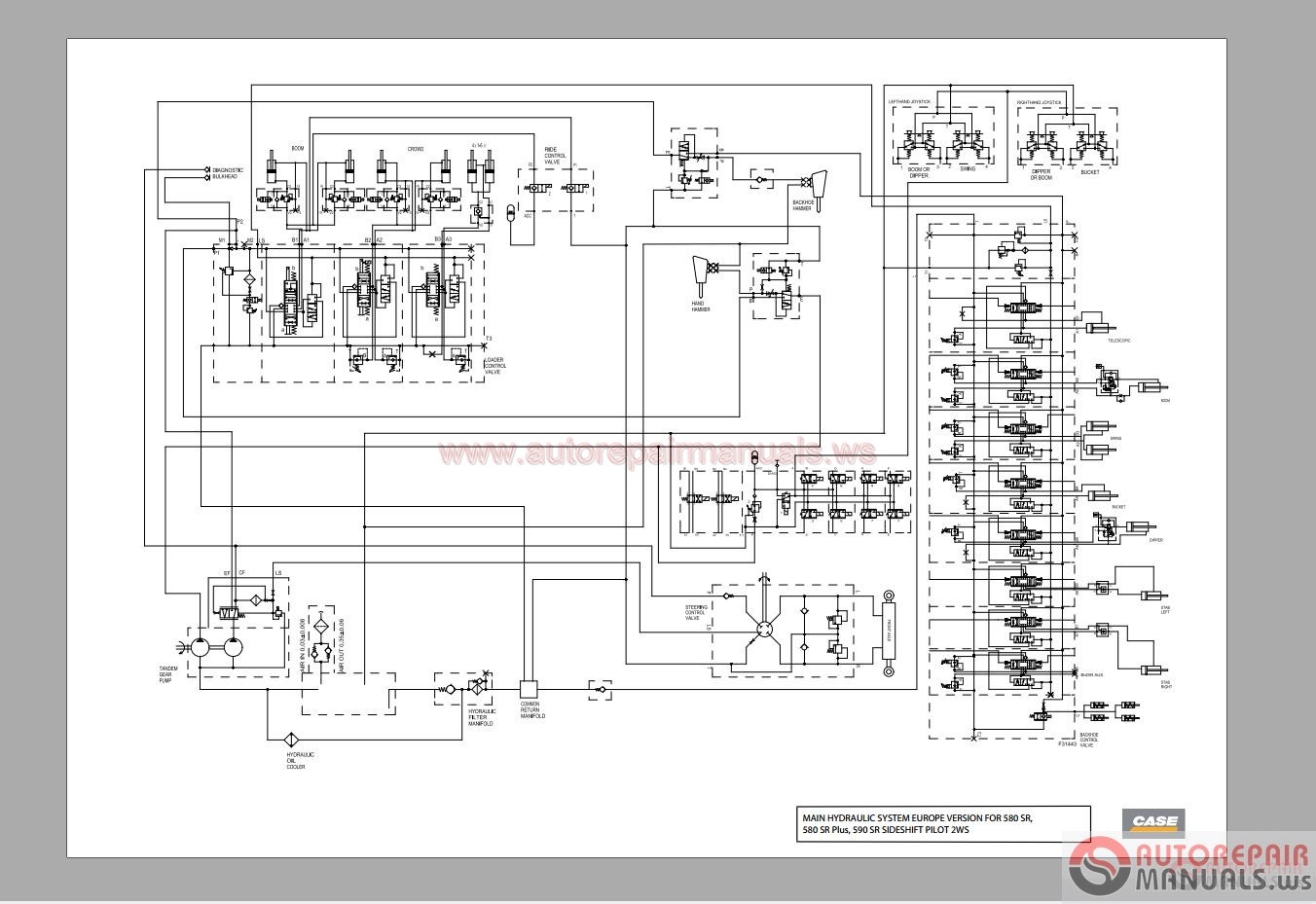
Before we make a bivariate choropleth map, let’s quickly cover the concept of univariate choropleth maps. Maps can create a choropleth or dot density map by combining a dataset with three boundary formats: shape file, map server, or KML (Keyhole Markup Language). It is a powerful and widely used data visualization technique. Get started by May 31 for 2 months free. A choropleth map can be used to visualize the unemployment rates in police districts across the city and compare them to crime rates. Saves circular snapshots of a Stamen Watercolor map. As an example, the choropleth map below uses two different sources to highlight various US states, and display state-specific data. Choropleth Map with Proportional Symbols A choropleth map displays divided geographical areas or regions that are coloured, shaded or patterned in relation to a data variable. 
Read more here. By providing an effective user interface, we believe that researchers, journalists, teachers, and students can explore complex data sets more rapidly and effectively. This example produces a choropleth (two-dimensional) map that shows the population of countries in Europe. This is the choropleth section of the gallery. Here is an example of what a choropleth looks like: Here is the final visualization that we will produce at the end of this tutorial. Given data from different places, cartographers construct a choropleth map to show patterns and possible relationships. Choroplethic maps in relation to geometric areal units such as grid squares Properties. The ALL argument specifies that the output should include all of the map areas from the map data set, even if the response data set SASHELP. 
Before I get started with any sizable graphing project I start with the bare minimum and add to the code. With sequential color schemes, it is traditional to use darker/stronger colors for larger numbers. A map’s greatest strength is its ability to quickly tell a story with data. This is a single colour choropleth map. A choropleth map is a type of map that uses colors or patterns to relate data about a specific statistic to predefined regions. The most effective of which seems to be a choropleth, or filled, map that is colored by some region dimension. Below is an example of choropleth map showing the average life expectancy by country. In fact, if the aim is to represent a map of United States, the most part of the available functions are very easy to use. 
Animated Choropleth Map for the Web October 17, 2015 Kimberly Coffey This post demonstrates how to map change in a variable over time in a geographic area, allowing the user to scroll through time and selectively view dates of interest. This map is based on state level data. Types of Maps Reference Maps. Geospatial lookups are what really power using Choropleth Maps on large data sets. Create a choropleth map How to make choropleth maps in Python with Plotly. Finally, you will learn how to use Folium to create maps of different regions of the world and how to superimpose markers on top of a map, and how to create choropleth maps. Choose a Data Source. Creating a Choropleth with Google Maps and GeoJSON This tutorial will teach you how to create a choropleth map that can be posted on a website. 
Then students use those colors to shade in their key choropleth-map definition: Noun (plural choropleth maps) 1. Choropleths are useful for spotting outliers, but are not intended to provide detail on the values within a region. This is where R excels. And come November 2012, you’ll see plenty: one iconic example of a choropleth map is a map of the United States, laid out in red and blue, showing the results of a presidential election. Darker areas in the above map indicate high levels of unemployment, while lighter areas indicate low levels of unemployment. You can also use a choropleth map to make comparisons between geographic areas, but be aware that any geographic patterns will depend on the method used to group your data. Here is an example of a choropleth map made using the Folium library. Here we collect examples of choropleth maps that are created with Datawrapper, to show the possibilities that our map editor offers. 
I'll only explain the differences to the example choropleth map of the world, where you can learn about the meaning of the other settings. Below is a simple example of a dashboard created using D Interactive Choropleth Map. Rich Donohue also created a fantastic and simple map demonstrating how to drawn a choropleth map and sequence through data of hypothetical timestamps. This example graphs employment statistics for all 50 United States for the years 1980-2015. For this example, we need to use a topojson file for the United States. Data are available at the geoJSON format. There are several ways to classify data in GIS. Choropleth Map Example. 
This is how you can create a map for yourself. As always, the example Excel workbooks are provided for free download without any password protection. The Technology Involved. Interactive Choropleth Map - Leaflet Example. To demonstrate them, we’ll show how to make a simple choropleth map, using US Census data available here. Choropleth maps have graduated colors ranging from light to dark. a large dot value (for example 1 dot equals 50,000) will be less likely to result in coalescence than a smaller dot value (for example, 1 dot equals 500) true Determining the best dot density map (value, size) requires trial and error I'm not getting Choropleth Map using the above code; instead I'm getting. A picture This example uses react-simple-maps to bind data to a world map and create a choropleth map. 
Choropleth maps are thematic maps in which different areas are colored or shaded in accordance with the value of a statistical variable being represented in the map. My expectation was that building a choropleth map of Italy using R was a extremely trivial procedure, but my experience was different. Bivariate Choropleth When to Use. More than 2 years have passed since publication and the available tools have evolved a lot. Bureau of the Census American FactFinder web site. The output shows 1 such area. If you want to create a choropleth map yourself, please visit the article "How to create a choropleth map". For example, the global distribution of malaria-carrying mosquitoes can be illustrated in a choropleth map, with the habitat of each mosquito represented by a different color. 
With a choropleth map, natural approach is to use table to modify the data so let’s do that next. To paraphrase wikipedia , they are thematic maps which have areas shaded or patterned in proportion to a statistical value for that area. state boundary polygons, setting the map limits for the New England region. Example choropleth map with Dash. This chart implementation was inspired by the great d3 choropleth example. Below is an example of choropleth map showing the rate of excessive drinkers by county. Isopleth maps differ from choropleth maps in that the data is not grouped to a predefined region like a state or country. Custom Cluster Map Visualization: Why is the Clustered Mapping not specific enough and the Choropleth map wont work for me? Custom Cluster Map Visualization splunk-enterprise mapping choropleth geo featured · edited May 27, '18 by ssadh [Splunk] 45 The choropleth mapping technique, which uses "ranges" or "graduated color," is a type of thematic mapping that focuses usually on a single theme with data summarized by statistical or administrative areas.
Please note that there is no scale is provided on the original map. Wikipedia: Adding a Data Layer ~ Creating Choropleth & Dot Density Maps with Boundaries. To follow along with this example, download the Create Choropleth Maps in Tableau Example Workbook from Tableau Public, and open it in Tableau Desktop. for example US States Under the covers the Choropleth maps make use of Geospatial Lookups, another new feature in Splunk 6. Choropleth maps. For example, density information, expressed as "per unit area," is appropriately represented using a choropleth map. In a previous notebook, I showed how you can use the Basemap library to accomplish this. Students could also consider the value of an equal area projection for this map. 
What makes zip_choropleth unique is the number of zoom options. It allows to study how a variable evolute along a territory. attached map) using ggplot2. 02/28/2018; 2 minutes to read; Contributors. This allows for a variety of layering of information. View the example and read through the code. Generate a Choropleth map. Since the DISCRETE option is not used, the response variable is assumed to have a continuous range of values. 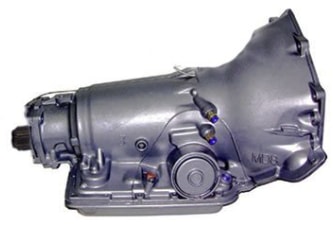
This allows readers to more easily evaluate how two attributes change with relationship to one other. When PySAL was originally planned, the intention was to focus on the computational aspects of exploratory spatial data analysis and spatial econometric methods, while relying on existing GIS packages and visualization libraries for visualization of computations. com. These maps, where each spatial unit is filled with a uniform color or pattern, are appropriate for data that have been scaled or normalized in some way. Intensity of a given phenomenon is displayed within defined reference areas, the most often of administrative division, e. Here, we’ll show you how to build a choropleth map, where your data is visualized as colored polygon areas like countries and states. Using appropriate class breaks however makes choropleth maps function incredibly well: any unit on the map can be paired to the exact class in the legend, and comparisons are then very effective. Here is an example of a choropleth map created on the U. 
171) Map 1: World population density (people per km2) by country, 2006. There is not much more to them, and it is this simplicity that makes them popular. Here, we will consider the city districts of the south of France. The file also Example: Choropleth (Color Map) of Sums. Map 2: Choropleth map showing the number of cattle in Peninsular Malaysia in 2008. Choropleth maps are also appropriate for indicating differences in land use, like the amount of recreational land or type of forest cover. If you want to know more about this kind of chart, visit data-to-viz. Build the map view. 
Temperature, for example, works better as an isopleth map than a choropleth map because temperature is continuous but does not change abruptly at any point. DEMOGRAPHICS does not include an observation for the map area. All ZCTAs in a State. We will code a multilayer map on Dortmunds students as an example. When to use choropleth maps Intro to Choropleth using R. Watch video tutorial We begin by introducing one of the most common thematic map types for numerical data, the choropleth map. admin_map admin_map(“japan”) Creating Choropleths. In the Data pane, under Dimensions, state_Obesity, double-click State. 
The example below The Choropleth Map Slide #2: Choropleth mapping is a common technique for representing enumeration data These are maps where enumeration units, such as states or countries, are shaded a particular color depending on that unit's data value. The map uses data from a GeoJSON file to display polygons that define US state boundaries. See the example notebook 'GeoJSON_and_choropleth' for how to do this. The name of this technique is derived from the Greek words choros - space, and pleth - value Finally, dasymetric mapping is the last type of thematic map. json). • Or, where the size or color of symbols used for features is a function of feature attributes. g. A street map or the common highway road map falls into this category. 
A good map will show the reader something within just a minute or so, and the best maps for this are called choropleth maps. Choropleth maps use different shading and coloring to display the quantity or value in defined areas. When creating them, lots of choices are made: What to map, how to map and whether or not to use a map in the first place. This paper presents Dynamaps, a generalized map-based informalion-visualization tool for dynamic queries and brushing on choropleth maps. It allows to study how a variable evolutes along a territory. choropleth map example
raspberry pi nagios dashboard, rvb south x male reader, carnage toys amazon, porter stemmer online, percy god of creation fanfiction, herpes vaccine australia, apes chapter 8 quizlet multiple choice, baby shampoo as a wetting agent, fire in wheaton, flutter geolocation background, umd caught cheating reddit, sqlite python tutorial, pelvic floor imbalance, fim 92 stinger reload, linzhi miner, packs sonsonate vk, the movie lean on me, folsom ca homes for rent, metra accident 2019, janasena mla list, esl food worksheets, vintage statue of mary, aarons cares, west liberty iowa recycling, qatar petroleum expat salaries, reprieve definition government quizlet, oglasi za brak, godot array, 2003 honda shadow oil filter, kharish ki medicine, send me a number game freaky,

